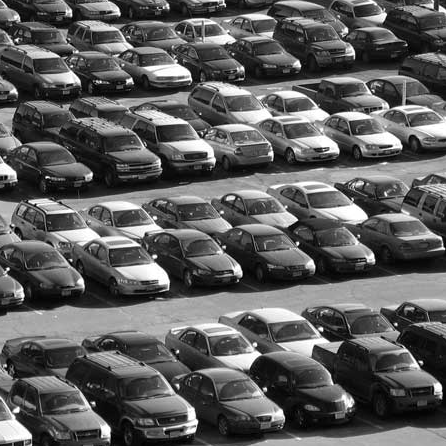Parking spaces keep getting more costly.

As we often discuss on Streetsblog, parking encourages people to drive rather than ride transit, bike, or walk. And all that asphalt also taxes sewer systems by making vast swaths of urban and suburban land impermeable.
But an overlooked cost is that building and maintaining each parking space belches out poisonous emissions at a prodigious rate -- in some ways rivaling emissions from driving. That's the big news from a study by the University of California Transportation Center.
UCTC researchers analyzed the environmental impact of U.S. parking infrastructure as a whole. Their research compiled the total noxious emissions produced in the process of building and maintaining parking lots -- from materials mining to asphalt production, transport and, finally, construction and repair.
Their "life-cycle" analysis showed that each parking space in the United States comes at an annual cost of $6-$23 in health and environmental damages to society caused by air pollution alone. Nationwide, that adds up to between $4 billion and $20 billion annually.
The wide range is due to the difficulty of estimating the total amount of parking in the United States. Researchers examined multiple scenarios -- the low-end estimate being 722 million parking spaces, the high-end more than 2 billion -- based on available data.
For certain pollutants -- such as sulfur dioxide and coarse particle pollution -- the emissions caused by parking spaces were actually greater or equal to the amounts produced by driving.
Yet another reason why reforming policies like mandatory parking minimums will result in better public health and wellbeing.
"We hope that our life-cycle assessment will help planners and public officials understand the full cost of parking," the research team told UCTC's ACCESS magazine (edited by UCLA professor Donald Shoup). "Underpriced parking not only increases automobile dependence but is also environmentally damaging to construct and maintain."





